With it's long history behind it, Pearson is forging a new path, and this bike is at the centre of it
Can a British brand break free from it's shop roots and take on some of the biggest manufacturers in the business?
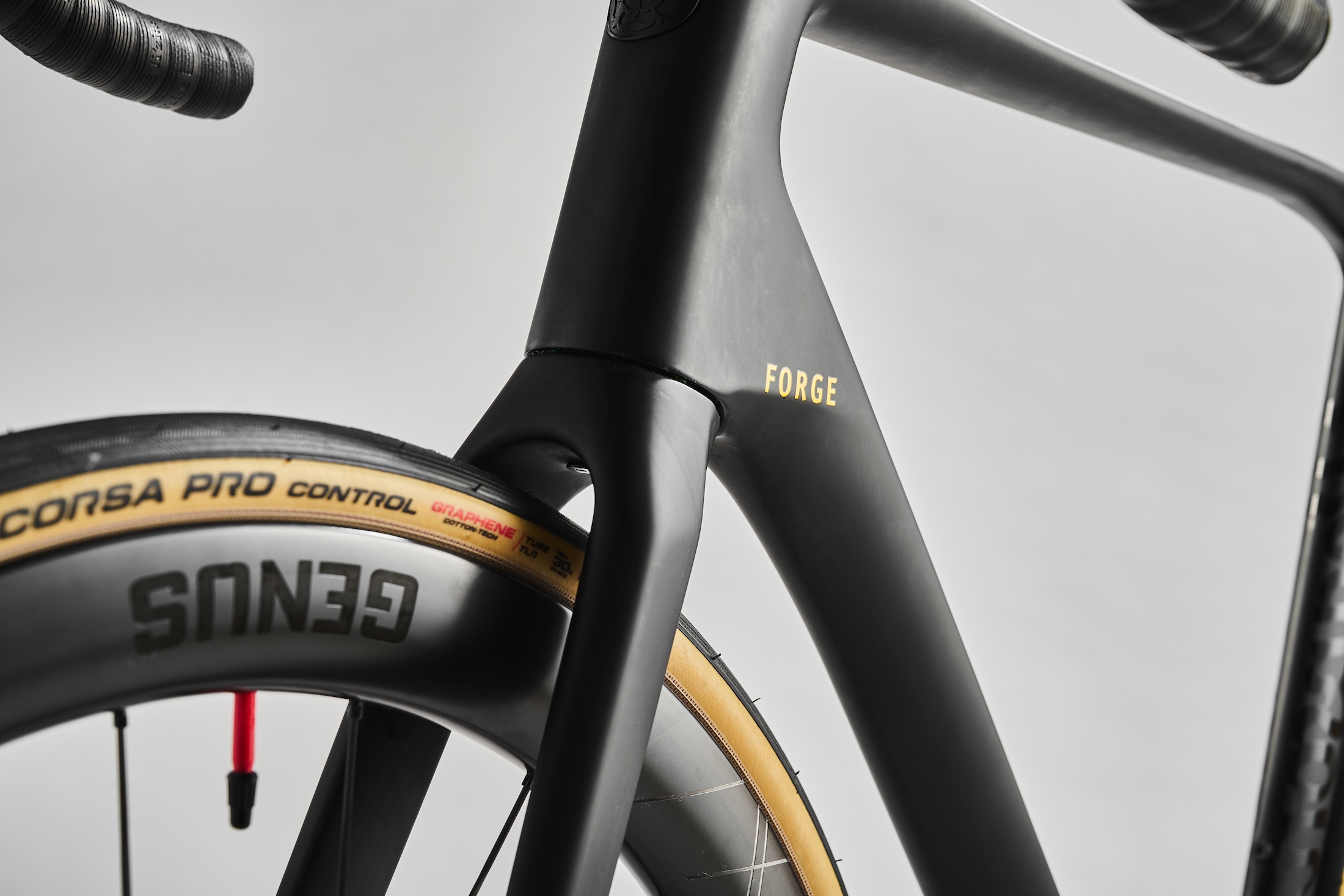
Pearson has created a bike with a specific clientele in mind, for whom this bike could be spot on. It’s got many of the wind-cheating features seen on top-end race bikes and a rigid ride to boot, but with a more forgiving upright riding position squeezed into a tight wheelbase to keep it responsive. This does affect handling, but f you struggle to get low on a bike, but want to give nothing away to the wind, this is a nice option from a famous British shop.
-
+
Great spec all round
-
+
Good value
-
+
Buying British (design)
-
-
Handling sacrificed for comfort
-
-
Very rigid for an endurance bike
You can trust Cycling Weekly.

The name Pearson will be better known to many as the oldest bike shop in the world. It is after all still owned and run by the Pearson family and is a staple of the London cycling scene.
But that name, that dates back to the 1800s, went through a transformation at the beginning of the year. Pearson is now a bike brand with big ambitions while the shop in East Sheen has been renamed as Forge 1860 in a nod to it's routes as a blacksmiths.
The Pearson bike range currently includes one gravel bike, the On and On, which I tested in 2023 - riding it across Scotland on the new Kirkpatrick coast-to-coast route - and two road bikes; the aero, race-focused Shift, and the endurance-focused Forge. Named in a nod to their history.
Even with a background stretching out over 150 years, it’s not easy for a brand born of an independent shop to compete with the likes to Trek, Specialized, Canyon and Cervelo, but if you have a loyal customer base, and some well-thought-out bikes, then you have a chance.
One other thing Pearson has to their advantage is a wealth of data from hundreds, even thousands, of customer bike fits from the shop. They’ve used this data to inform the design of their frames, which, while using similar geometry to other manufacturers in the middle of the size range, sees them adjust the geometry for outliers who need the extra small or XXL frames.
The Forge is what they call their endurance-performance bike, and as the name suggests, aims to give riders all the benefits of a race-focused bike, with the comfort needed for longer rides. The question is, can the two be melded to create the perfect bike, or do you end up with a Frankenstien machine that pleases no one?
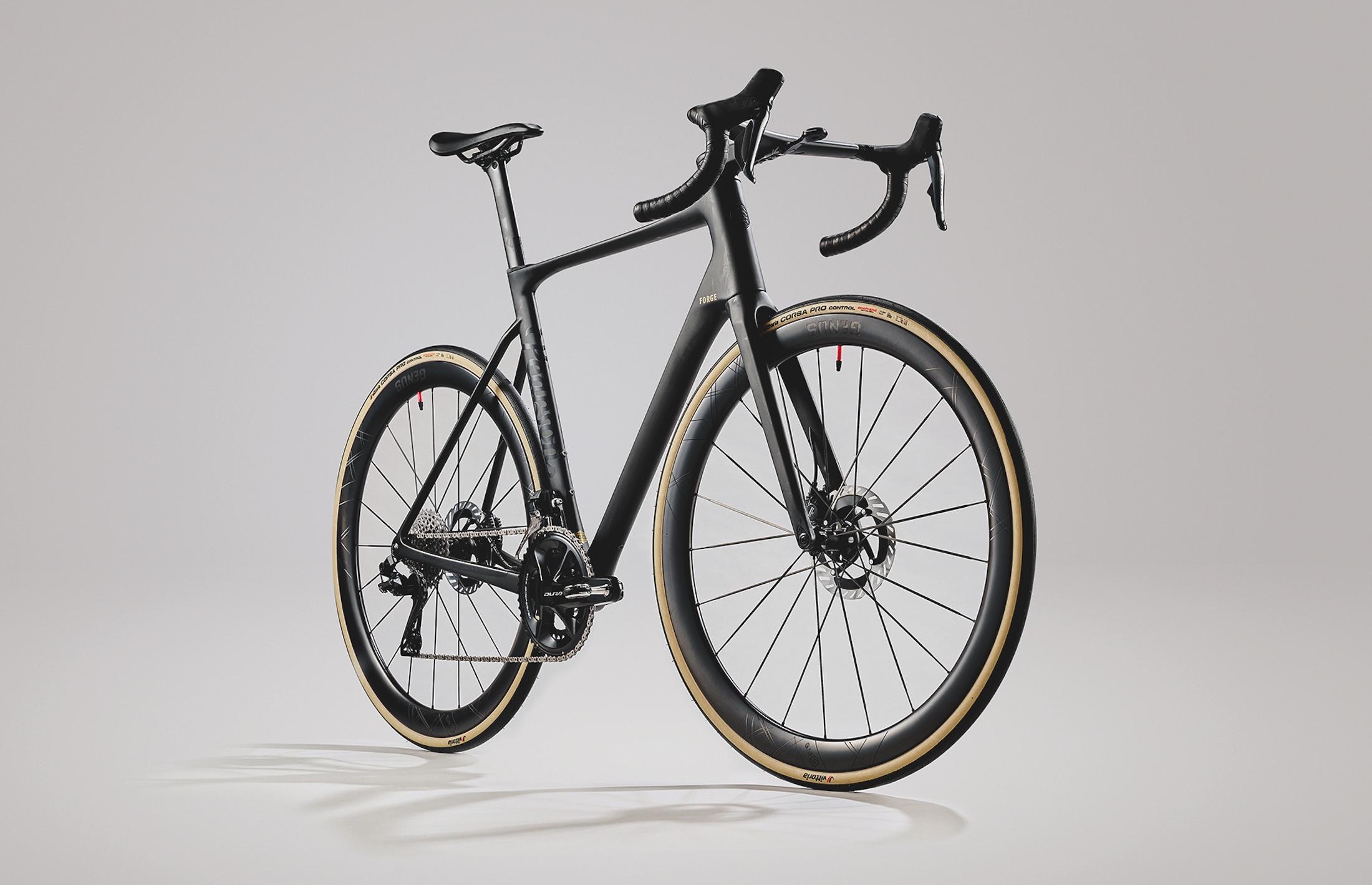
The Pearson Forge is one of two road bikes in the Pearson range. For now.
Pearson Forge - construcion
The top of the range Forge is specced with a Dura Ace Di2 groupset and 45mm Ere carbon wheels. The 21 (straight-pull) spoke, hookless rims have a 21mm internal width and came with hookless compatible Vittoria Corsa Pro tyres - with 30gm TPU tubes - that sat bang on 30mm wide when pumped up to 70 PSI. The tyres were easy to roll off by hand, and not too difficult to get back on. But do remember to check tyres are hookless compatible when replacing them.
These wheels are nothing flash, but rolled nicely and didn’t go out of true during our time riding them. UK potholes notwithstanding, they should last, but are also ripe for an upgrade in future years.
The latest race content, interviews, features, reviews and expert buying guides, direct to your inbox!
The spec is bang up to date, with internal cable routing through the one-piece 38mm wide integrated bar and stem, a seat pin clamp tucked into the top tube, dropped seat stays, truncated seat tube, plenty of tyre clearance, deep(ish)-section carbon wheels and a universal deraileur hanger (UDH).
Everything you’d expect to see on a thoroughbred race bike. But step back a bit and you’ll notice the high front end. This is where the endurance-encouraging comfort comes in.
This 54cm size bike has a 60cm stack height which put my hands 5cm higher than my go-to 54cm bike. The reach is also three centimetres shorter than my regular bike making my overall position higher and shorter, shifting my centre of gravity up and back.
Such a position is designed for those who struggle to get low, maybe due to a lack of flexibility in the back, neck or shoulders or a waistline that’s getting a little bigger each year. It’s an obvious draw, but it does change a bike's riding dynamics.
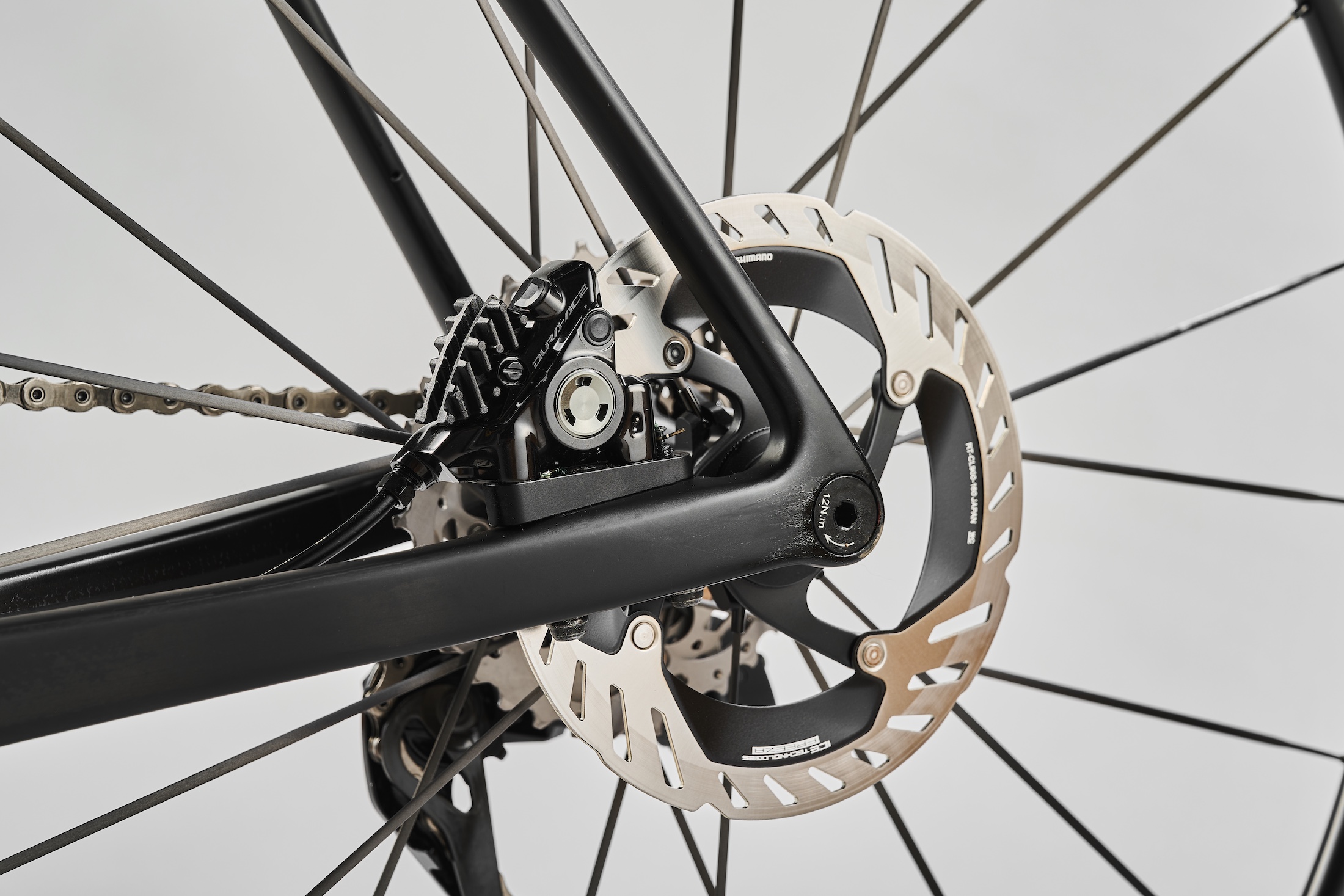
Dura Ace brake calipers and rotors give all the stopping power that's needed
Pearson Forge - the ride
There’s no doubt that the adoption of narrow bars with gently turned-in brake levers has changed the feel of a bike more than anything else I’ve experienced since riding my first set of deep-section carbon wheels.
The narrow position has been widely adopted across the industry and race scene and although takes a little getting used to, it’s no less nimble through the corners nor stable in a straight line. Even though the UCI has recently moved to ban set ups that bring a riders hands in too close together, I’ve quickly grown to really like the position.
But while the Forge puts your hands and arms in a more compact position, the rest of your torso is still sitting up in the wind. Bend your elbows a bit and you can get into a tuck, but the natural riding position on the top of the bars is quite upright which many people will find more comfortable.
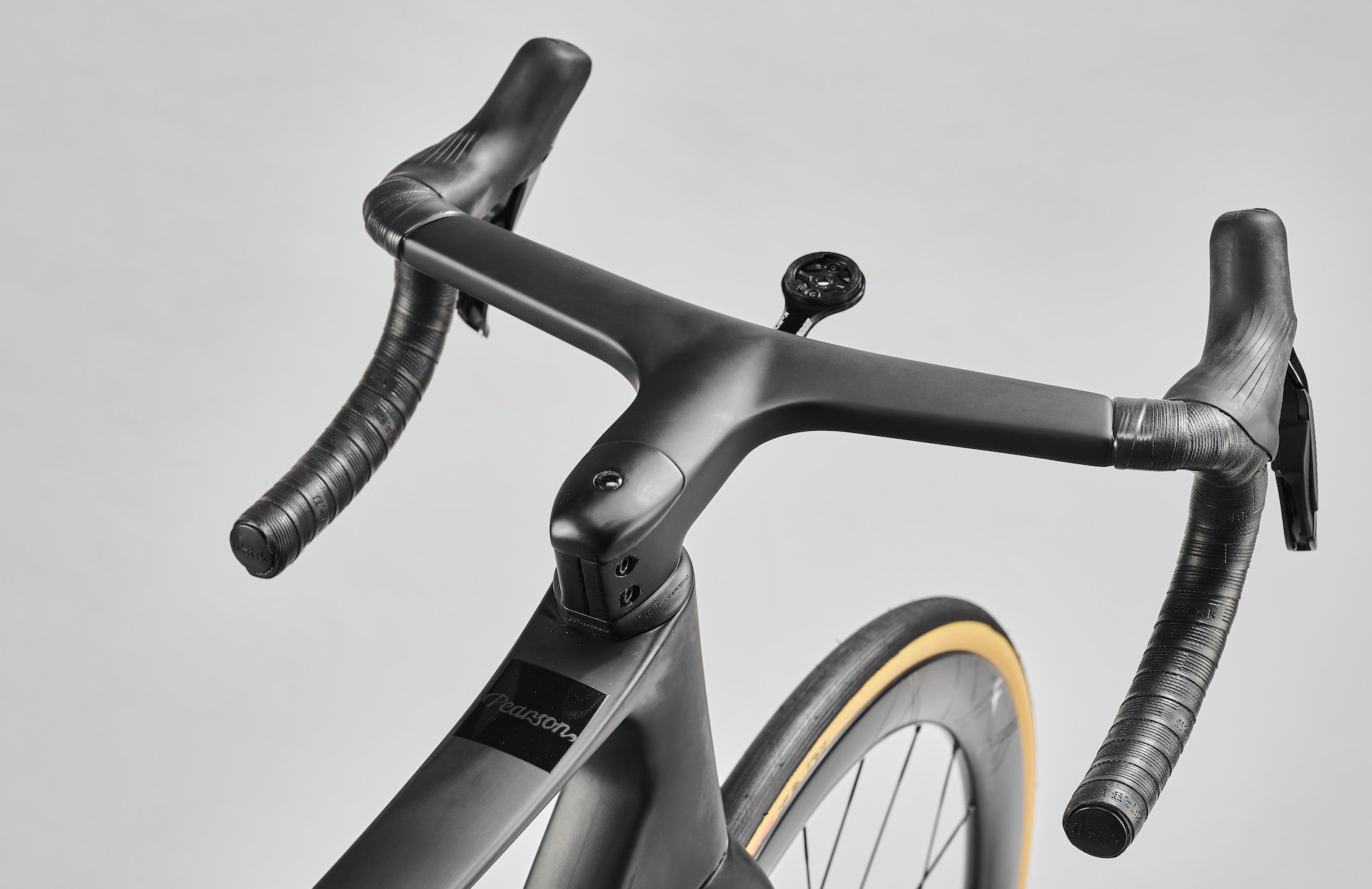
An integrated bar and stem with internal cable routing means this endurance bike has a front end with clean, aero lines
It was still easy to get into a tuck and roll along an aero position akin to a race-focused bike, although the short reach meant my knees were clipping my elbows. Out of the saddle my knees caught the back of the Zefal bar bag I was testing and significantly overlapped the bar ends. But if you keep your knees in you shouldn’t catch them, although with 38cm bars that's harder for bigger riders.
Handling is the main feature affected by the upright geometry. The bike goes round corners okay, but it doesn’t want to drop in and rail it round. The issue here is my centre of gravity that’s higher and closer to the rear wheel than I’m used to, due to the reach and stack. These combine to move the steering point further back if looking at the bike and rider as a complete system. It also takes some weight off the front wheel, therefore slightly reducing its influence when cornering.
My riding
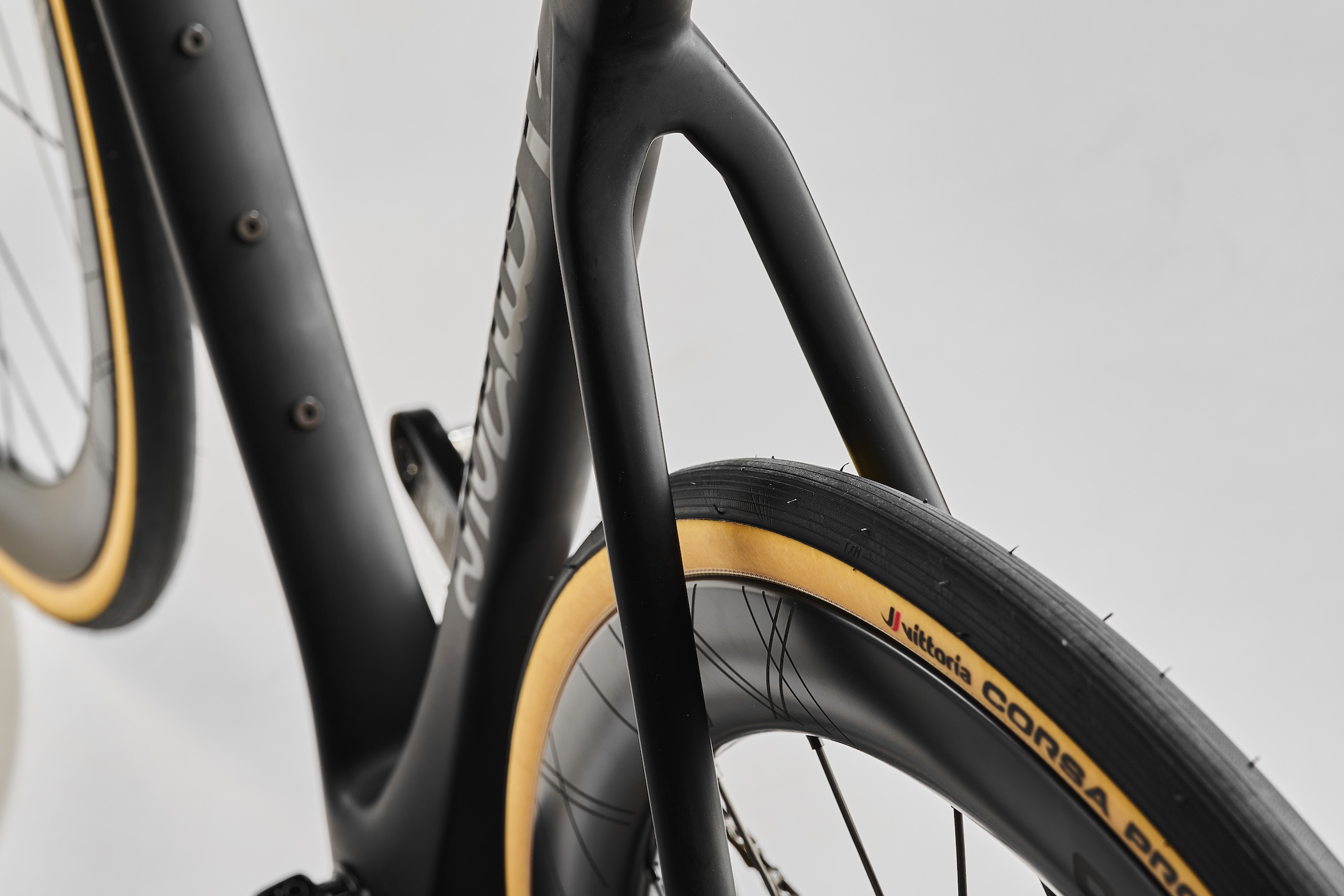
Clattering over the rough roads around the North Downs in Surrey and Kent saw me letting air out of the tyres for a more forgiving ride. I eventually found their sweetspot (this is rider weight dependent of course) at 50PSI, which took some getting used to, I don’t mind admitting. Steep hills and twisty little lanes that I seek out to avoid the traffic really put the focus on the bike’s handling characteristics.
This could be countered with a longer wheelbase and specifically longer chainstays to move the rear wheel back in the system. With 408mm for the chainstays and 992mm for the wheelbase, the Forge has the same footprint as most out-and-out race bikes. While this, along with the chunky chainstays, means it’s responsive, there is an affect on the handling. For comparison, ‘all-road’ bikes will typically have chainstays of 415mm.
Sprinting out of the saddle required a readjustment in my position too, as my natural position put my chest too far ahead of the bars. But if you’re in the market for an endurance bike, perhaps your sprinting days are now behind you.

Editor of Cycling Weekly magazine, Simon has been working at the title since 2001. He first fell in love with cycling in 1989 when watching the Tour de France on Channel 4, started racing in 1995 and in 2000 he spent one season racing in Belgium. During his time at CW (and Cycle Sport magazine) he has written product reviews, fitness features, pro interviews, race coverage and news. He has covered the Tour de France more times than he can remember along with the 2008 and 2012 Olympic Games and many other international and UK domestic races. He became the 134-year-old magazine's 13th editor in 2015 and can still be seen riding bikes around the lanes of Surrey, Sussex and Kent. Albeit a bit slower than before.
You must confirm your public display name before commenting
Please logout and then login again, you will then be prompted to enter your display name.